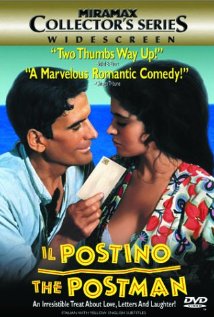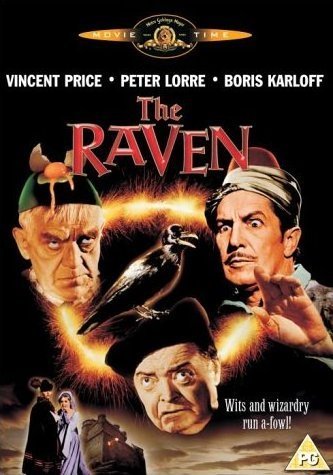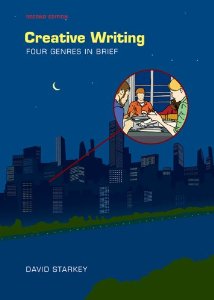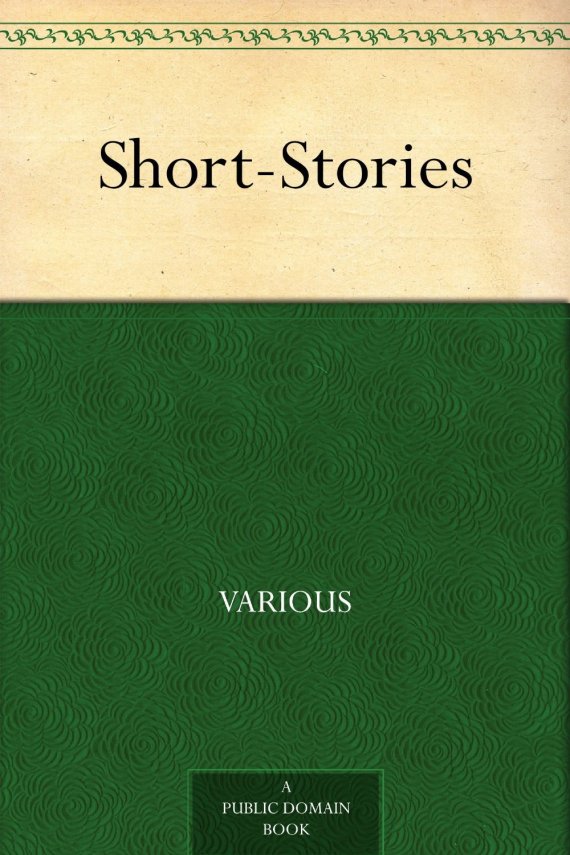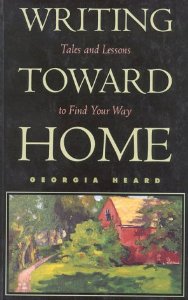
Recommended Reading:
Writing Toward Home: Tales and Lessons to Find Your Way, by
Georgia Heard
Here are further thoughts on Creative Writing:
Creative writing is any writing that goes outside the bounds of
normal professional, journalistic, academic, or technical forms of
literature, typically identified by an emphasis on narrative craft,
character development, and the use of literary tropes. Due to the
looseness of the definition, it is possible for writing such as feature
stories to be considered creative writing, even though they fall under
journalism, because the content of features is specifically focused on
narrative and character development. Both fictional and non-fictional
works fall into this category, including such forms as novels,
biographies, short stories, and poems. In the academic setting, creative
writing is typically separated into fiction and poetry classes, with a
focus on writing in an original style, as opposed to imitating
pre-existing genres such as crime or horror. Writing for the screen and
stage—screenwriting and playwriting—are taught separately, but fit under
the creative writing category as well.
Here is a personal and compassionate book for everyone
writers, poets, teachers, lovers of life, and especially those seeking
to find their writing voices again or for the first time. It is an
autobiographical travelogue moving from a volcano in Hawaii to Fort
Sill, Oklahoma, and places in between, with writing at its heart.
Writing Toward Home
offers practical advice on overcoming some of the obstacles writers of
all ages face: writer’s block, fear of rejection, confronting silencing
critics in your head, finding the time to write. Each short chapter
speaks to the larger truths about writing and how to truly live the
writer’s life: how to become more of a risk taker, how to excavate the
past as a source, and how to become an acute observer of the world.
Writing Toward Home is a book that will remind you-and help
you remind your students-that the true source of writing is the creative
self. In this fast culture when most people have so little time to do
anything but menial tasks, it will jumpstart you, it will awaken to you
the journey within, it will make you want to write.
Today, we will work with the following
Short Story Element Rubric:
Below is an EXCERPT from it.
Name____________________
Creative Writing ____________
Name of story analyzing _______________________ By __________________ Published_______
SHORT STORY ELEMENTS WORKSHEET – Fill in the following as appropriate:
SETTING –
a) Place –
b) Time –
c) Weather conditions –
d) Social conditions –
e) Mood or atmosphere –
PLOT –
a) Introduction -
b) Rising Action –
c) Climax –
d) Falling action -
e) Denouement –
CONFLICT—
Types:
1) External –
2) Internal -
Kinds:
1) Man vs. Man (physical) –
2) Man vs. Circumstances (classical) –
3) Man vs. Society (social) –
4) Man vs. Himself/Herself (psychological) -
____
We will also read
The Fall of the House of Usher, by Edgar Allen Poe, as a sample of a great short story.
“The Fall of the House of Usher” was first published in September
1839 in Burton’s Gentleman’s Magazine. It was slightly revised in 1840
for the collection Tales of the Grotesque and Arabesque. It contains
within it the poem “The Haunted Palace”, which had earlier been
published separately in the April 1839 issue of the Baltimore Museum
magazine.
In 1928, Éditions Narcisse, predecessor to the Black Sun Press,
published a limited edition of 300 numbered copies with illustrations by
Alastair.
The story begins with the unnamed narrator arriving at the house of
his friend, Roderick Usher, having received a letter from him in a
distant part of the country complaining of an illness and asking for his
help. Although Poe wrote this short story before the invention of
modern psychological science, Roderick’s condition can be described
according to its terminology. It includes a form of sensory overload
known as hyperesthesia (hypersensitivity to light, sounds, smells, and
tastes), hypochondria (an excessive preoccupation or worry about having a
serious illness), and acute anxiety. It is revealed that Roderick’s
twin sister, Madeline, is also ill and falls into cataleptic, deathlike
trances. The narrator is impressed with Roderick’s paintings, and
attempts to cheer him by reading with him and listening to his
improvised musical compositions on the guitar. Roderick sings “The
Haunted Palace”, then tells the narrator that he believes the house he
lives in to be alive, and that this sentience arises from the
arrangement of the masonry and vegetation surrounding it.
Roderick later informs the narrator that his sister has died and
insists that she be entombed for two weeks in a vault (family tomb) in
the house before being permanently buried. The narrator helps Roderick
put the body in the tomb, and he notes that Madeline has rosy cheeks, as
some do after death. They inter her, but over the next week both
Roderick and the narrator find themselves becoming increasingly agitated
for no apparent reason. A storm begins. Roderick comes to the
narrator’s bedroom, which is situated directly above the vault, and
throws open his window to the storm. He notices that the tarn
surrounding the house seems to glow in the dark, as it glowed in
Roderick Usher’s paintings, although there is no lightning.
The narrator attempts to calm Roderick by reading aloud The Mad
Tryst, a novel involving a knight named Ethelred who breaks into a
hermit’s dwelling in an attempt to escape an approaching storm, only to
find a palace of gold guarded by a dragon. He also finds hanging on the
wall a shield of shining brass on which is written a legend: that the
one who slays the dragon wins the shield. With a stroke of his mace,
Ethelred kills the dragon, who dies with a piercing shriek, and proceeds
to take the shield, which falls to the floor with an unnerving clatter.
As the narrator reads of the knight’s forcible entry into the
dwelling, cracking and ripping sounds are heard somewhere in the house.
When the dragon is described as shrieking as it dies, a shriek is heard,
again within the house. As he relates the shield falling from off the
wall, a reverberation, metallic and hollow, can be heard. Roderick
becomes increasingly hysterical, and eventually exclaims that these
sounds are being made by his sister, who was in fact alive when she was
entombed and that Roderick Usher knew that she was alive. The bedroom
door is then blown open to reveal Madeline standing there. She falls on
her brother, and both land on the floor as corpses. The narrator then
flees the house, and, as he does so, notices a flash of light causing
him to look back upon the House of Usher, in time to watch it break in
two, the fragments sinking into the tarn.
“The Fall of the House of Usher” is considered the best example of
Poe’s “totality”, where every element and detail is related and
relevant.
The theme of the crumbling, haunted castle is a key feature of Horace
Walpole’s Castle of Otranto (1764), which largely contributed in
defining the Gothic genre. The presence of a capacious, disintegrating
house symbolizing the destruction of the human body is a characteristic
element in Poe’s later work.
“The Fall of the House of Usher” shows Poe’s ability to create an
emotional tone in his work, specifically feelings of fear, doom, and
guilt.These emotions center on Roderick Usher who, like many Poe
characters, suffers from an unnamed disease. Like the narrator in “The
Tell-Tale Heart”, his disease inflames his hyperactive senses. The
illness manifests physically but is based in Roderick’s mental or even
moral state. He is sick, it is suggested, because he expects to be sick
based on his family’s history of illness and is, therefore, essentially a
hypochondriac. Similarly, he buries his sister alive because he expects
to bury her alive, creating his own self-fulfilling prophecy.
The House of Usher, itself doubly referring both to the actual
structure and the family, plays a significant role in the story. It is
the first “character” that the narrator introduces to the reader,
presented with a humanized description: its windows are described as
“eye-like” twice in the first paragraph. The fissure that develops in
its side is symbolic of the decay of the Usher family and the house
“dies” along with the two Usher siblings. This connection was emphasized
in Roderick’s poem “The Haunted Palace” which seems to be a direct
reference to the house that foreshadows doom.
L. Sprague de Camp, in his Lovecraft: A Biography [p. 246f], wrote
that “[a]ccording to the late [Poe expert] Thomas O. Mabbott, [H. P.]
Lovecraft, in “Supernatural Horror”, solved a problem in the
interpretation of Poe” by arguing that “Roderick Usher, his sister
Madeline, and the house all shared one common soul”. The explicit
psychological dimension of this tale has prompted many critics to
analyze it as a description of the human psyche, comparing, for
instance, the House to the unconscious, and its central crack to the
personality split which is called dissociative identity disorder. Mental
disorder is also evoked through the themes of melancholy, possible
incest, and vampirism. An incestuous relationship between Roderick and
Madeline is never explicitly stated, but seems implied by the strange
attachment between the two.
Opium, which Poe mentions several times in both his prose and poems,
is mentioned twice in the tale. The gloomy sensation occasioned by the
dreary landscape around the Usher mansion is compared by the narrator to
the sickness caused by the withdrawal symptoms of an opiate-addict. The
narrator also describes Roderick Usher’s appearance as that of an
“irreclaimable eater of opium”.
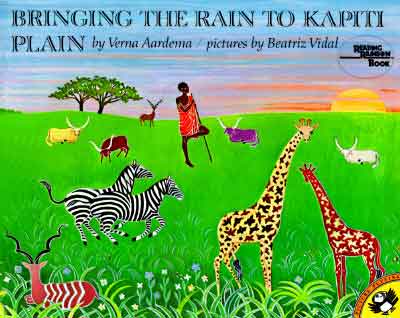 I
really love the book "Bringing The Rain to Kapiti Plain," by Verna
Aardema. I have enjoyed it so much that I am planning to give it as a
gift to my sister who has two young children, ages 4 and 7. This is a
simple story about a cattle herdsman and his wish for rain on the
African plain. The narrative structure of the story is based on a
sequence of events that builds suspense and interest in children until
the end of the story. This is a memorable story; it is very simple to
understand and has a powerful musical quality that, as a young adult, I
enjoy reading aloud. The rhymes and rhythms are so strong that all young
children will be wide eyed with suspense and interest until the very
end of the story. I particularly enjoyed one line where the author
rhymes "fat" and "Ki-pat": "So the grass grew green/ And the cattle
fat!/ And Ki-pat got a wife/ And a little Ki-pat-." This story is
suitable for young children because its tone is happy. It
deals with the relationship of humans with water, plants and animals.
... From this book ... they will learn about the connection between
humans and nature by enjoying the colored pictures. The pictures are so
vibrant that it is easy to imagine the world of Ki-pat. As an adult, I
enjoy this book because it describes the cycle of life in a very
interesting way. Readers of all ages will see that human life is totally
dependent upon nature, and the existence of human beings without nature
is nearly impossible. Readers will also learn how the lives of humans
and animals are dependent on rain; people and animals need each other
and every part of nature for their perfect existence. I highly recommend
Verna Aardema's "Bringing the Rain to Kapiti Plain" to anyone who has
young children and is looking for a book that illustrates the
relationship between nature and human beings. The colorful, detailed
pictures will keep the children interested while they are learning about
the connection between nature and human beings.
I
really love the book "Bringing The Rain to Kapiti Plain," by Verna
Aardema. I have enjoyed it so much that I am planning to give it as a
gift to my sister who has two young children, ages 4 and 7. This is a
simple story about a cattle herdsman and his wish for rain on the
African plain. The narrative structure of the story is based on a
sequence of events that builds suspense and interest in children until
the end of the story. This is a memorable story; it is very simple to
understand and has a powerful musical quality that, as a young adult, I
enjoy reading aloud. The rhymes and rhythms are so strong that all young
children will be wide eyed with suspense and interest until the very
end of the story. I particularly enjoyed one line where the author
rhymes "fat" and "Ki-pat": "So the grass grew green/ And the cattle
fat!/ And Ki-pat got a wife/ And a little Ki-pat-." This story is
suitable for young children because its tone is happy. It
deals with the relationship of humans with water, plants and animals.
... From this book ... they will learn about the connection between
humans and nature by enjoying the colored pictures. The pictures are so
vibrant that it is easy to imagine the world of Ki-pat. As an adult, I
enjoy this book because it describes the cycle of life in a very
interesting way. Readers of all ages will see that human life is totally
dependent upon nature, and the existence of human beings without nature
is nearly impossible. Readers will also learn how the lives of humans
and animals are dependent on rain; people and animals need each other
and every part of nature for their perfect existence. I highly recommend
Verna Aardema's "Bringing the Rain to Kapiti Plain" to anyone who has
young children and is looking for a book that illustrates the
relationship between nature and human beings. The colorful, detailed
pictures will keep the children interested while they are learning about
the connection between nature and human beings.
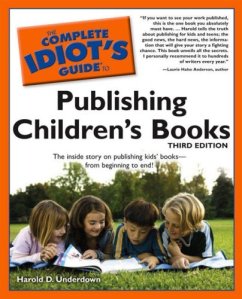


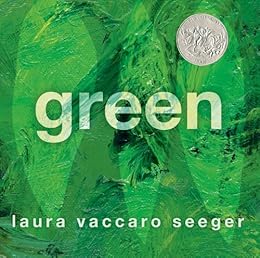
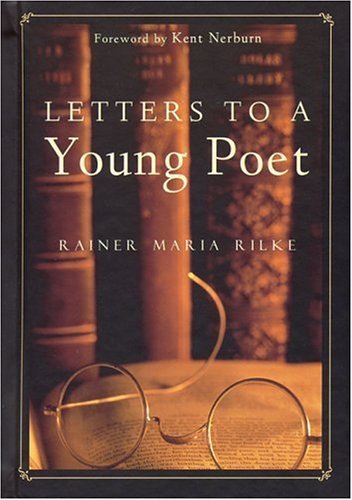
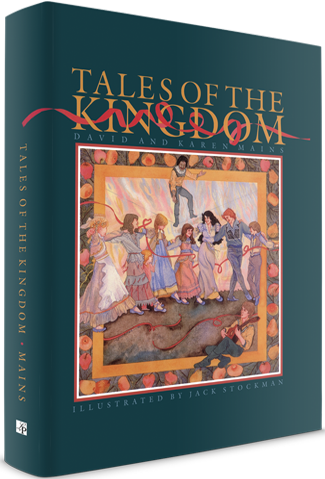
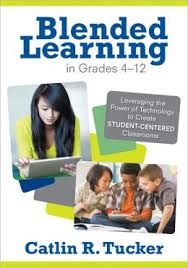
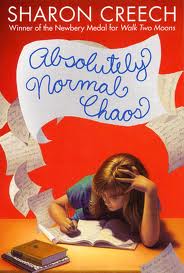
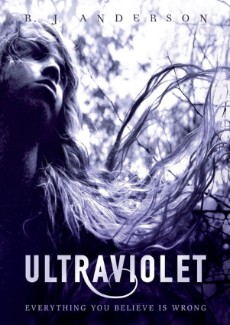
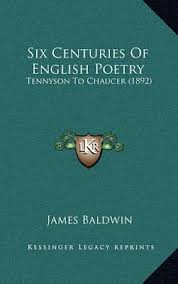
![Recommended Reading: Creating Poetry [Paperback] John Drury (Author)](http://youngpeoplespavilion.files.wordpress.com/2013/06/creating-poetry-john-drury-paperback-cover-art.jpg?w=570)
![Recommended Reading: Dead Poets Society [Mass Market Paperback] N. H. Kleinbaum (Author)](http://youngpeoplespavilion.files.wordpress.com/2013/06/67238.jpg?w=570)
